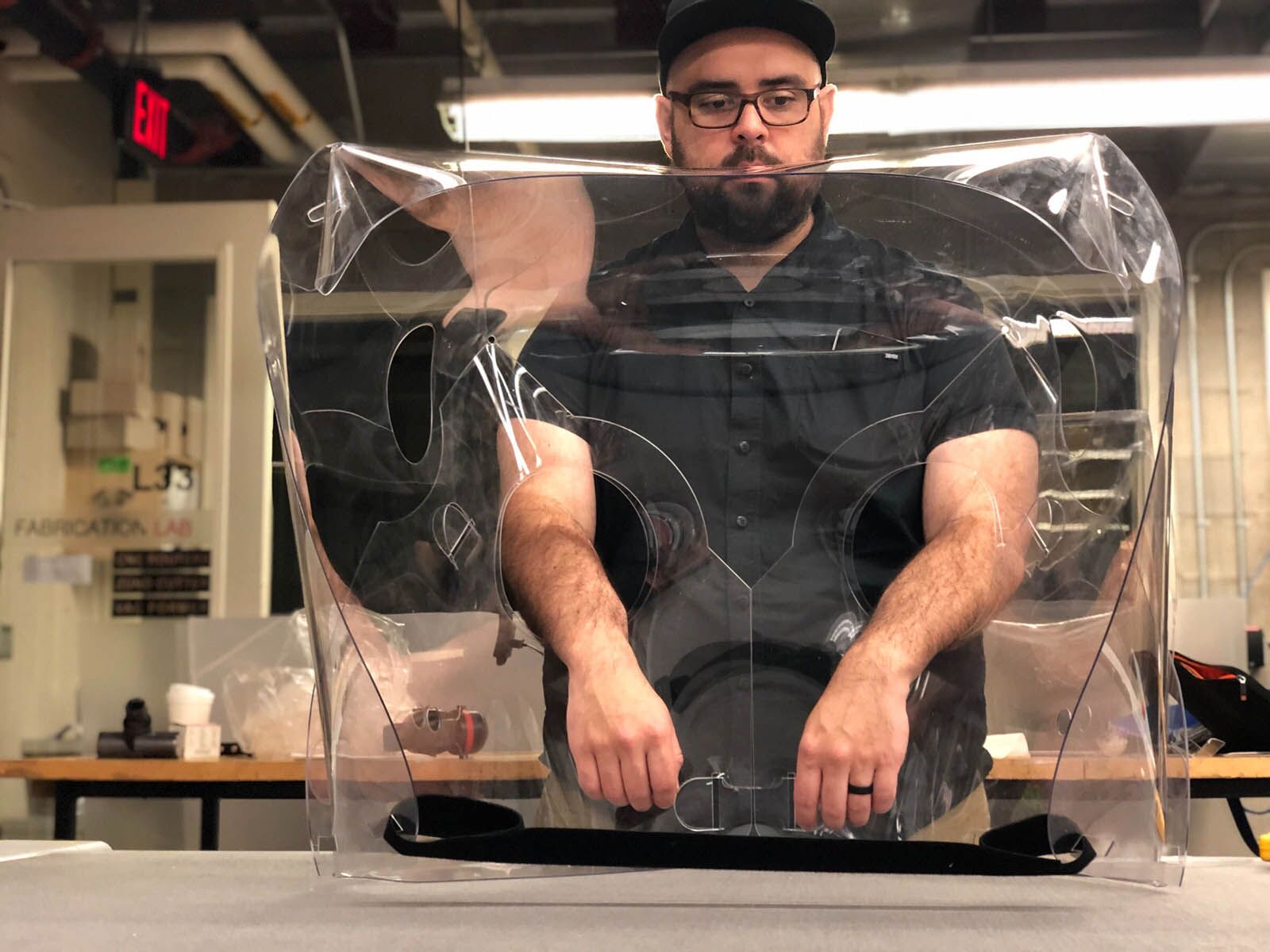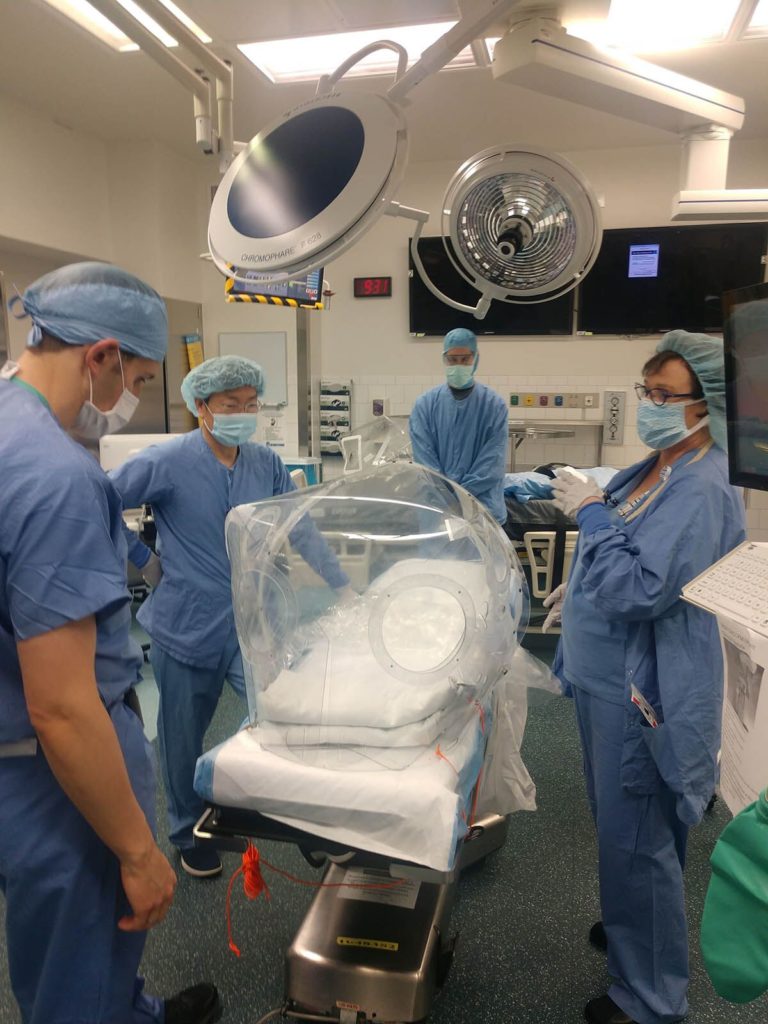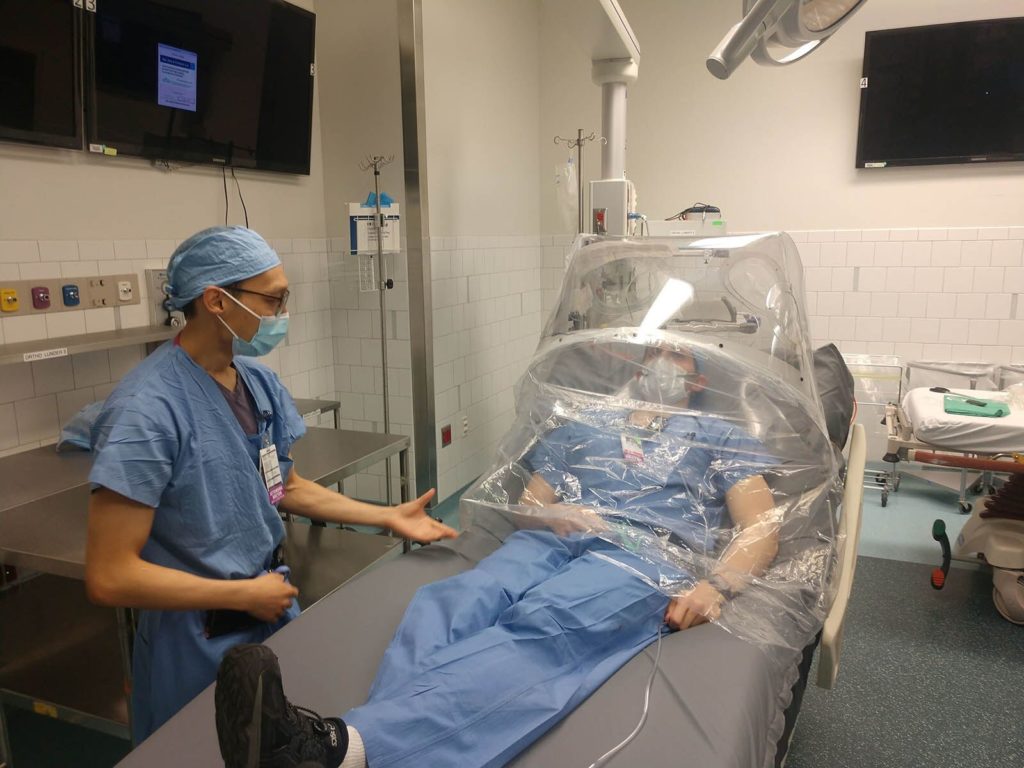Amid ongoing fabrication and delivery of face masks and shields, Harvard Graduate School of Design staff and faculty have added another critical piece of personal protective equipment, or PPE, to their production roster: patient isolation hoods, or PIHs, intended to contain the coronavirus in clinical settings and protect medical professionals.
The GSD’s Digital Fabrication Specialist Chris Hansen has collaborated with an array of Harvard and GSD colleagues to design two PIH prototypes, fabricating them on April 13 and delivering them to Massachusetts General Hospital (MGH) on April 14. Hansen and colleagues spent much of April 15 on continued design and prototyping; by the end of this week, the GSD aims to have produced between 20 and 30 PIHs for a trial run in MGH’s intensive care unit.

Hansen’s PIH collaborators include the GSD’s Zach Seibold, Lecturer in Architecture; Nathan Phipps, a researcher at Harvard’s Wyss Institute for Biologically Inspired Engineering; Eric Höweler, Associate Professor of Architecture at the GSD; and Saurabh Mhatre, a research associate at the GSD’s Material Processes and Systems Group (MaPS). (Seibold and Mhatre are also each a graduate of the GSD’s Master in Design Studies program.)
The cohort’s two PIH prototypes cover a patient’s head and body, with apertures that allow doctors to insert a breathing tube or attach a ventilator as needed, and ample space within the structure to enable physical intervention by medical staff. Hansen describes a design process that started with clinical requirements, followed by conceptual renderings and a gradual weeding-down of these renderings alongside doctor feedback, until producible prototypes emerged.
In each design, the hood has two holes for doctors to insert their arms and access the patient, as well as an opening for a breathing tube. Other key design elements include negative air pressure within, intended to suck infectious aerosol particles away from the care-giving doctor; a drape that acts as a closable membrane between patient and plastic hood, with no rigid forms placed on the patient; and a lightweight, disposable overall envelope. Flexibility of use throughout the medical process was a cornerstone of the design process.
The Harvard cohort’s design work has been conducted largely via a Slack channel they’ve titled “Full Body Protection MGB,” with a design process that’s spanned much of the past two weeks. They have worked alongside Dr. Samuel Smith, an anesthesiologist at MGH and instructor at Harvard Medical School, in order to apply medical-design guidelines to their process. As Smith observes in Architectural Record, such a marriage of architecture and medicine is fruitful on various—and urgent—levels.
“If it doesn’t function well, both ergonomically and practically, it’s not going to be useful to physicians,” Smith says.
“Architects need to be more involved with health care innovation and my colleagues need to understand that design matters.”
Read more about the GSD’s PIH efforts in Architectural Record.


